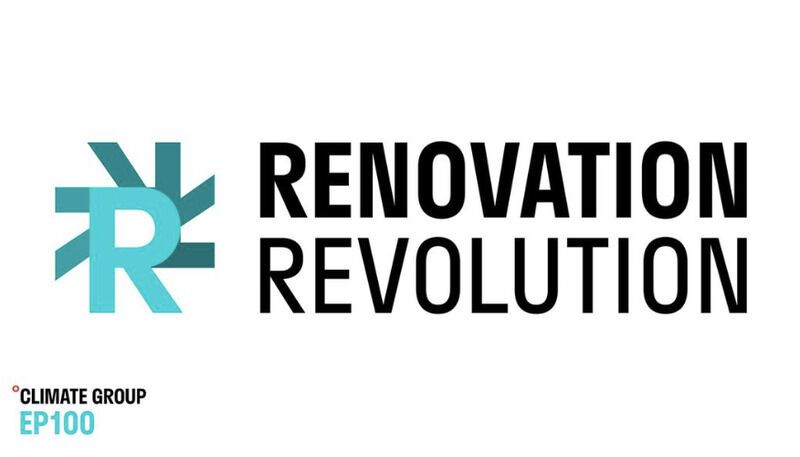Sustainability-Focused Building Renovations
Sustainability-Focused Building Renovations Trend Hunter


Renovation Revolution: Addressing the Urgent Need for Increased Building Renovation Rates in Europe

The Climate Group, in collaboration with partners such as CBRE, Danfoss, ROCKWOOL, Signify, and VELUX, has launched a project called Renovation Revolution to tackle the pressing issue of low renovation rates in buildings across Europe. With the European Union (EU) aiming for net zero emissions by 2050, the current annual renovation rate of approximately 1% falls short of the International Energy Agency’s (IEA) recommended rate of 2.5% per year to achieve this target.
Addressing the Gap through Renovation Revolution
The Renovation Revolution project aims to conduct research and implement strategies that will significantly increase renovation rates, overcome financial and regulatory barriers, and align the priorities of landlords and tenants. By leveraging existing technologies and programs, such as building controls and district heating networks, the project seeks to achieve multiple goals:
- Reducing Emissions: By promoting energy-efficient renovations, the project aims to contribute to the EU’s goal of achieving net zero emissions by 2050. Through the adoption of sustainable building practices and the use of renewable energy sources, the project seeks to minimize the carbon footprint of buildings.
- Saving Energy Costs: Renovating buildings to improve energy efficiency can lead to significant cost savings in the long run. The project aims to encourage the adoption of energy-saving measures, such as insulation, efficient heating and cooling systems, and smart building technologies, to reduce energy consumption and lower energy bills for building owners and occupants.
- Creating Jobs: The Renovation Revolution project recognizes the potential for job creation in the renovation sector. By increasing renovation rates, there will be a growing demand for skilled workers in various fields, such as construction, engineering, and renewable energy. This can contribute to economic growth and provide employment opportunities.
- Improving Health and Well-being: Renovating buildings can have a positive impact on the health and well-being of occupants. The project aims to promote renovations that enhance indoor air quality, natural lighting, and thermal comfort, creating healthier and more comfortable living and working environments.
Collaborative Efforts for Sustainable Development Goals
The Renovation Revolution project is aligned with the United Nations’ Sustainable Development Goals (SDGs), particularly:
- SDG 7: Affordable and Clean Energy – By improving energy efficiency in buildings, the project contributes to ensuring access to affordable, reliable, sustainable, and modern energy for all.
- SDG 8: Decent Work and Economic Growth – Through job creation in the renovation sector, the project supports sustainable economic growth and promotes decent work opportunities.
- SDG 11: Sustainable Cities and Communities – By promoting sustainable building practices and reducing emissions, the project contributes to making cities and human settlements inclusive, safe, resilient, and sustainable.
- SDG 13: Climate Action – The project directly addresses the need for urgent action to combat climate change and its impacts by accelerating building renovations and reducing greenhouse gas emissions.
The Renovation Revolution project, with its focus on increasing renovation rates, overcoming barriers, and aligning priorities, plays a crucial role in achieving the EU’s target of net zero emissions by 2050 and advancing the Sustainable Development Goals. By leveraging existing technologies and programs, the project paves the way for a more sustainable and resilient built environment in Europe.
SDGs, Targets, and Indicators
1. Which SDGs are addressed or connected to the issues highlighted in the article?
- SDG 7: Affordable and Clean Energy
- SDG 8: Decent Work and Economic Growth
- SDG 9: Industry, Innovation, and Infrastructure
- SDG 11: Sustainable Cities and Communities
- SDG 13: Climate Action
- SDG 17: Partnerships for the Goals
The article discusses the urgent need for increased renovation rates of buildings in Europe to achieve the EU’s target of net zero emissions by 2050. This connects to SDG 7, which focuses on affordable and clean energy, as well as SDG 13, which addresses climate action. Additionally, the project aims to create jobs and improve economic growth (SDG 8), leverage existing technologies and programs (SDG 9), and align priorities between landlords and tenants (SDG 11). The collaboration between Climate Group and its partners also demonstrates the importance of partnerships for achieving the goals (SDG 17).
2. What specific targets under those SDGs can be identified based on the article’s content?
- Target 7.2: Increase substantially the share of renewable energy in the global energy mix.
- Target 8.3: Promote development-oriented policies that support productive activities, decent job creation, entrepreneurship, creativity, and innovation.
- Target 9.4: Upgrade infrastructure and retrofit industries to make them sustainable, with increased resource-use efficiency and greater adoption of clean and environmentally sound technologies and industrial processes.
- Target 11.6: Reduce the adverse per capita environmental impact of cities, including by paying special attention to air quality and municipal and other waste management.
- Target 13.2: Integrate climate change measures into national policies, strategies, and planning.
- Target 17.17: Encourage and promote effective public, public-private, and civil society partnerships, building on the experience and resourcing strategies of partnerships.
Based on the article’s content, the specific targets that can be identified are:
1. Increase the share of renewable energy in the energy mix (Target 7.2).
2. Promote policies that support job creation, entrepreneurship, and innovation (Target 8.3).
3. Upgrade infrastructure and retrofit industries to make them sustainable (Target 9.4).
4. Reduce the environmental impact of cities, including air quality and waste management (Target 11.6).
5. Integrate climate change measures into national policies and planning (Target 13.2).
6. Encourage effective partnerships between public, private, and civil society sectors (Target 17.17).
3. Are there any indicators mentioned or implied in the article that can be used to measure progress towards the identified targets?
Yes, there are indicators mentioned or implied in the article that can be used to measure progress towards the identified targets:
- Renewable energy share in the energy mix
- Number of jobs created in the renovation sector
- Investment in sustainable infrastructure and retrofitting
- Air quality improvements in cities
- Inclusion of climate change measures in national policies and planning
- Number of effective partnerships established
These indicators can be used to measure progress towards the identified targets. For example, the increase in the renewable energy share in the energy mix can be measured by tracking the percentage of renewable energy sources used. The number of jobs created in the renovation sector can be measured through employment data. Investment in sustainable infrastructure and retrofitting can be measured by tracking the amount of funding allocated to such projects. Air quality improvements in cities can be measured through air pollution monitoring. The inclusion of climate change measures in national policies and planning can be assessed by analyzing policy documents and plans. The number of effective partnerships established can be measured by counting the number of collaborations formed between different stakeholders.
4. Table: SDGs, Targets, and Indicators
| SDGs | Targets | Indicators |
|---|---|---|
| SDG 7: Affordable and Clean Energy | Target 7.2: Increase substantially the share of renewable energy in the global energy mix. | Renewable energy share in the energy mix |
| SDG 8: Decent Work and Economic Growth | Target 8.3: Promote development-oriented policies that support productive activities, decent job creation, entrepreneurship, creativity, and innovation. | Number of jobs created in the renovation sector |
| SDG 9: Industry, Innovation, and Infrastructure | Target 9.4: Upgrade infrastructure and retrofit industries to make them sustainable, with increased resource-use efficiency and greater adoption of clean and environmentally sound technologies and industrial processes. | Investment in sustainable infrastructure and retrofitting |
| SDG 11: Sustainable Cities and Communities | Target 11.6: Reduce the adverse per capita environmental impact of cities, including by paying special attention to air quality and municipal and other waste management. | Air quality improvements in cities |
| SDG 13: Climate Action | Target 13.2: Integrate climate change measures into national policies, strategies, and planning. | Inclusion of climate change measures in national policies and planning |
| SDG 17: Partnerships for the Goals | Target 17.17: Encourage and promote effective public, public-private, and civil society partnerships, building on the experience and resourcing strategies of partnerships. | Number of effective partnerships established |
Behold! This splendid article springs forth from the wellspring of knowledge, shaped by a wondrous proprietary AI technology that delved into a vast ocean of data, illuminating the path towards the Sustainable Development Goals. Remember that all rights are reserved by SDG Investors LLC, empowering us to champion progress together.
Source: trendhunter.com

Join us, as fellow seekers of change, on a transformative journey at https://sdgtalks.ai/welcome, where you can become a member and actively contribute to shaping a brighter future.







